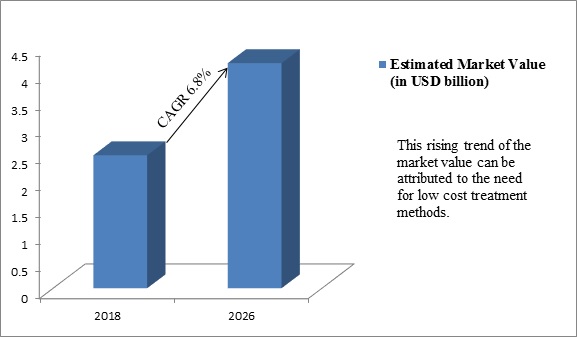The Future Of Fitness: A Look Into Human Optimization Center'S Method
The Future Of Fitness: A Look Into Human Optimization Center'S Method
Blog Article
Staff Writer-Axelsen Helms
In a rapidly progressing health and fitness landscape, the Human Optimization Center's strategy represents a standard shift in making the most of human possibility via an extensive, customized technique. By merging modern modern technology with customized methods including physical, mental, and psychological elements, the HOC offers a glimpse into a future where specific optimization is the keystone of physical fitness. This innovative method obstacles conventional health and fitness standards by redefining the borders of what the human body and mind can attain, assuring a transformative journey in the direction of unequaled health and performance.
Development of Physical Fitness Techniques
The development of health and fitness approaches has been pushed by innovations in clinical research study and innovation, forming how individuals approach their physical well-being in modern-day society. In the past, fitness regimens were commonly generalised, concentrating on standard workouts and nourishment guidelines. Nevertheless, with the combination of scientific study, physical fitness approaches have become much more customized and efficient.
Today, physical fitness programs are customized to people based upon elements like genes, metabolic rate, and particular wellness goals. Scientific research studies have actually exposed the value of variables such as rest, stress and anxiety management, and recuperation in maximizing physical fitness results. Consequently, modern-day health and fitness methods currently emphasize holistic strategies that include not only physical exercise yet also psychological wellness and way of life practices.
Furthermore, innovation has reinvented the means fitness is kept an eye on and tracked. https://www.vogue.com/article/natural-wellness-center-at-kisawa-sanctuary , physical fitness applications, and on the internet systems give people with real-time information on their progression, enabling them to make informed choices regarding their fitness and health goals. This integration of science and technology has led the way for a new age of individualized and data-driven health and fitness approaches.
Technology in Training Programs
Using sophisticated modern technology has actually transformed the landscape of training programs, enhancing the effectiveness and effectiveness of fitness routines for people seeking ideal efficiency and results. Modern health and fitness facilities now incorporate sophisticated devices like wearable physical fitness trackers, smart tools, and virtual reality simulations right into their training programs. These technologies give real-time data on various aspects of exercise such as heart price, calories melted, and workout strength, enabling instructors to customize programs to private demands properly.
Moreover, virtual reality (VIRTUAL REALITY) training programs offer immersive experiences that can mimic real-world settings, adding a component of enjoyable and interaction to workouts. This not just encourages people to push their limitations yet also aids in reducing the uniformity frequently associated with conventional workout routines.
In addition, on-line platforms and mobile applications have actually made fitness a lot more obtainable by providing online mentoring, exercise strategies, and nutrition assistance at the touch of a switch. These tech-driven services enable people to track their progression, remain answerable, and make educated decisions concerning their physical fitness journey.
As innovation remains to advance, the future of training programs looks appealing in optimizing human performance and achieving desired fitness objectives.
Making The Most Of Human Possible
Harnessing the complete potential of the human body needs a thorough approach that incorporates physical training, mental conditioning, and tailored techniques for optimum efficiency. By concentrating on making pain in hip of human possibility, the Human Optimization Center (HOC) stresses a holistic strategy that considers the interconnectedness of physical, mental, and emotional health.
Physical training plays an essential function in optimizing human possibility. Through tailored exercise routines, toughness training, cardio exercises, and adaptability drills, individuals can enhance their physical capabilities and achieve peak performance levels. In addition, correct nourishment and rest are necessary components that sustain physical training and overall health.
Psychological conditioning is one more crucial element of making the most of human capacity. Techniques such as visualization, mindfulness, goal-setting, and stress and anxiety administration assistance people cultivate a resistant way of thinking, boost focus, and enhance mental clearness. By educating the mind to stay favorable, concentrated, and disciplined, individuals can overcome obstacles and do at their best.
Personalized techniques better boost the optimization procedure by tailoring techniques to specific requirements, goals, and capabilities. With customized analyses, data-driven understandings, and continual changes, individuals can maximize their training, nutrition, and way of living selections to open their full potential.
Conclusion
In conclusion, the Human Optimization Facility's approach to fitness combines progressed technology, personalized strategies, and an all natural strategy to optimize human capacity.
By integrating physical training, psychological conditioning, and tailored workout routines, the HOC concentrates on improving physical capacities, mental clarity, and emotional well-being.
Via an individualized technique including strength training, cardio exercises, adaptability drills, visualization, mindfulness, and stress monitoring strategies, the HOC intends to open individuals' complete potential and maximize their total well-being.
